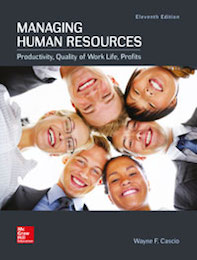Description
Test Bank For Managing Human Resources Wayne Cascio 11th Edition
Chapter 04
The Legal Context of Employment Decisions
True / False Questions
|
1. |
As a society, we espouse equality of opportunity, rather than equality of outcomes. True False |
|
2. |
Civil rights laws precisely define the term “discrimination.” True False |
|
3. |
Unequal (disparate) treatment is based on an intention to discriminate. True False |
|
4. |
It is okay to exclude people from selection as long as the exclusion is based on what can be demonstrated to be job-related criteria. True False |
|
5. |
The Civil Rights Act of 1866 grants all citizens the right to make and enforce contracts for employment. True False |
|
6. |
The Equal Employment Opportunity Commission was created to ensure that employers, employment agencies, and labor organizations comply with the Constitution. True False |
|
7. |
Under Title VII of the Civil Rights Act of 1964, discrimination is permissible when a prohibited factor (e.g., gender) is a bona fide occupational qualification. True False |
|
8. |
Under Title VII of the Civil Rights Act of 1964, preferences of the employer, coworkers, or clients are relevant and constitute bona fide occupational qualifications (BFOQs). True False |
|
9. |
Title VII of the Civil Rights Act of 1964 explicitly permits bona fide seniority, merit, or incentive systems “provided that such differences are not the result of an intention to discriminate.” True False |
|
10. |
If someone decides to bring suit under Title VII of the Civil Rights Act of 1964, the first step is to establish a prima facie case of discrimination. True False |
|
11. |
Once a court accepts prima facie evidence of discrimination, the burden of producing evidence remains with the defendant (the employer) till the trial ends. True False |

Reviews
There are no reviews yet.